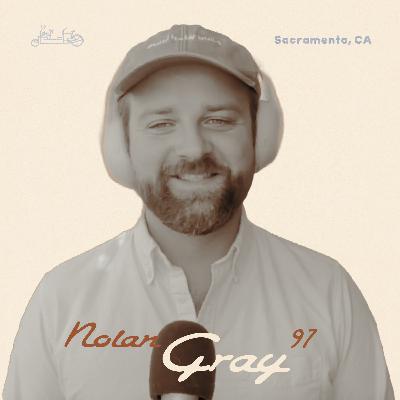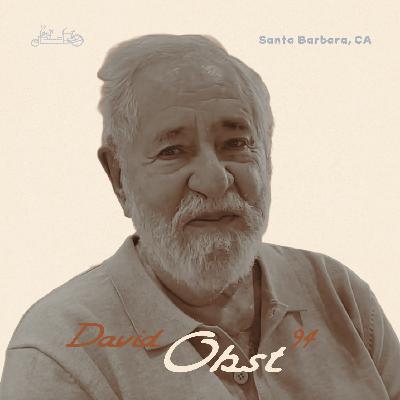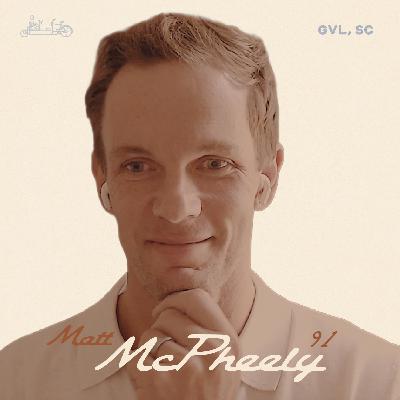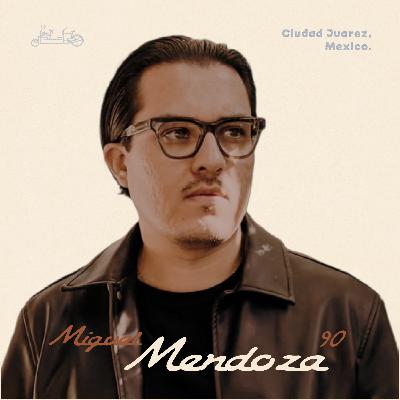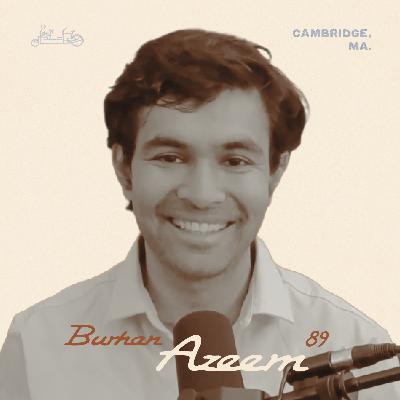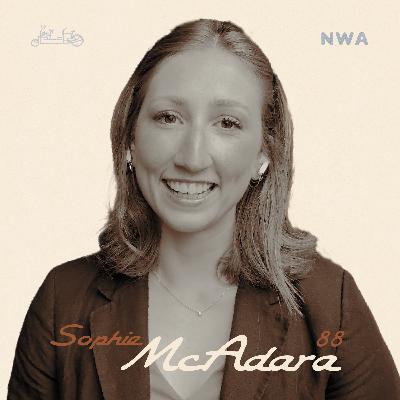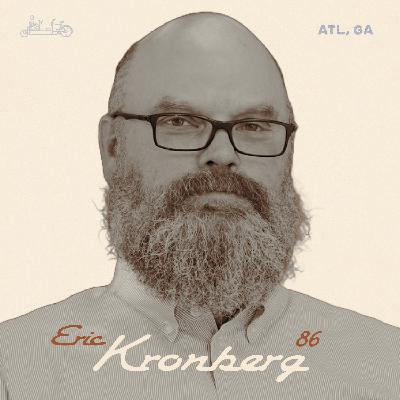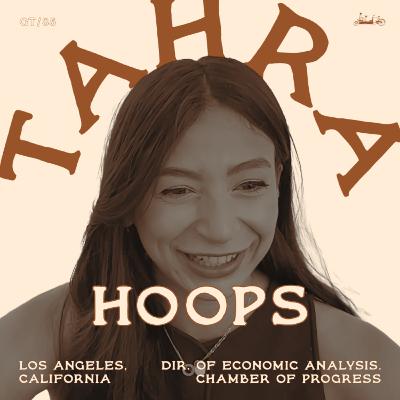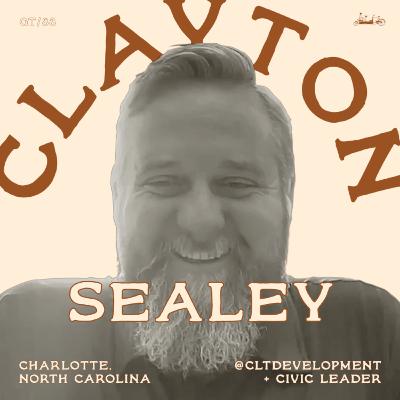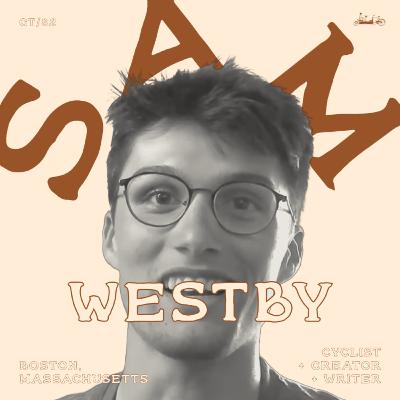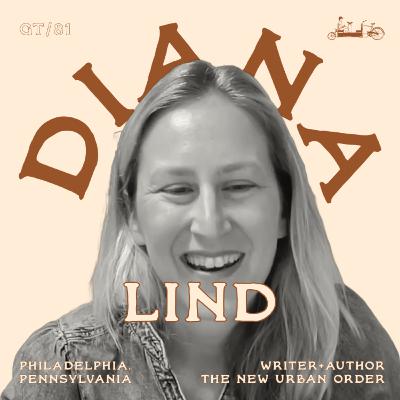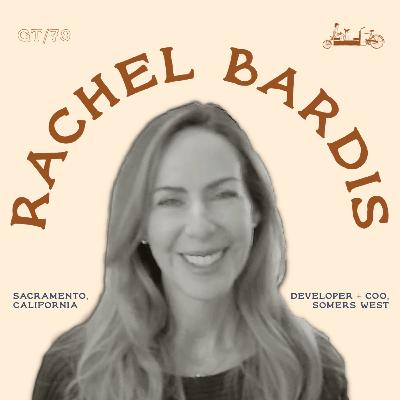Discover good traffic.
good traffic.

98 Episodes
Reverse
Nolan Gray — Senior Director of Legislation and Research at California YIMBY — is in good traffic this week for a discussion on how the state with America’s biggest housing problem has become a national leader in reforming the rules of the built environment. California is often treated as both a cautionary tale and a blueprint — derided for its crises yet envied for its innovation. Nolan walks us through California’s last decade of housing policy evolution — from failed early bills like SB 827 and SB 50 to seismic wins like SB 79, which legalized mid-rise multifamily housing near transit, and AB 130, which exempted infill housing from certain environmental reviews. He explains how bipartisan coalitions, local data, and a willingness to rethink outdated laws like CEQA have made real change possible.We also touch on: Why density is environmentalism. The cultural paradox of Los Angeles and car dependence. How Sacramento quietly became California’s model midsized city. The future of transit funding and infill development. Lessons from working across political divides to make housing work. How storytelling and communication shape real policy progress.Timeline:00:00 The nuance of California.01:15 The contradictions of California’s reputation.02:29 Economic powerhouse, housing failure.04:21 Newsom, YIMBYs, and the new momentum.05:20 Nolan Gray.07:23 California’s housing crisis explained.08:47 Why families are leaving the state.09:51 The political wake-up call.10:12 Origins of recent SBs.11:33 Early lessons from failed reforms.12:24 The ADU revolution.13:20 Environmental review reform (AB 130).14:17 Construction costs and the next frontier.15:11 Inside the CEQA reform victory.20:02 Rethinking “environmentalism” in housing.22:47 How CEQA became weaponized.24:20 The irony of “greenfield” development.25:40 Real environmentalists vs. procedural ones.26:09 Bridging divides across California.27:37 Exporting the housing crisis inland.28:18 Bipartisan coalitions and shared values.29:28 Property rights and family housing narratives.30:14 SB 79 as a national model.31:14 The transit funding question.32:18 Transit agencies as landowners.33:02 Revenue models for sustainable transit.33:47 Building costs and American inefficiency.34:31 Transit as geometry, not ideology.35:14 The LA paradox.36:08 Car culture as identity.37:23 Angelenos waking up to change.38:38 Sacramento’s quiet leadership.45:34 Practical vs. theoretical planning.47:20 UCLA and the civic responsibility of planners.48:06 Donald Shoup’s influence.50:33 Communicating policy and nuance.52:24 The gap between research and perception.53:05 Policy storytelling and responsibility.54:16 How to make complexity accessible.55:06 Why housing reform depends on communication.56:22 Wrapping up.For context:Read Nolan's work on Substack.On SB79.On CEQA.California YIMBY.Nolan's book, on zoning.
Ryan Short — author of the new book The Civic Brand, and founder of place-branding firm Civic Brand — joins the show this week for a discussion on how cities can more meaningfully define their brand. The term has been used and overused in almost every industry imaginable, and yet, Ryan argues the importance of the idea at its root. Particularly, for places.Through this, we spend time on the lifecycle of a cliché, and how cities of various sizes can and should) go about avoiding becoming one.The new book zooms in, and surveys places that have done the work around brand intentionally, across the states. It's a great starting spot for folks in and around local government, and citizens alike. Timeline:00:00 Ryan Short is in good traffic.03:14 Cities at the tipping point with brand.04:55 Why Ryan wrote The Civic Brand.07:31 An Alaska project and triple bottom line.09:37 Tourism vs. place management.10:25 Listening to locals, not just departments.12:00 Branding as a tool for equity and alignment.13:18 Urbanism and marketing.15:06 Walkable cities vs. livable cities.17:15 Who the book is for — civic leaders to citizens.19:17 Libraries, Dewey Decimal, and early feedback.21:13 Marketing professionals and the shift toward destination management.23:20 How local culture actually drives big decisions.27:54 Power, culture, and the street-level brand.29:18 Balancing capitalism, people, and place.32:08 Density as environmentalism.33:53 Realism over idealism.34:38 When words lose meaning — “brand” and “place.”38:06 “Keep Austin Weird” and what it really means.39:09 Religion, symbols, and the depth of meaning.41:35 Making “welcoming” real in the built environment.43:28 Incongruities between vision and reality.44:10 Brand as civic north star.46:39 Why alignment matters.47:32 How to start civic alignment locally.49:18 Housing, universities, and shared goals.52:16 “Civic alignment” as the real message.52:54 The thesis chapter — start with Chapter 1.53:36 Commute — living and walking in Salida, CO.55:48 Wrapping up.For context:Buy the book.Ryan's firm: Civic Brand.
An opinion brief, on defining and messaging urban design's healthcare-equivalent issue. Democrats are centering the current government shutdown showdown around a salient issue: healthcare. It's a smart framework, as the issue has long been a winner for them, and it benefits large swathes of folks across the political aisle. We need to do a better job of strategizing our shorthand, and communicating accordingly. Timeline:00:00 The urbanist wish list.00:33 Strategy.01:29 Lessons from the current government shutdown.02:24 Why healthcare works.04:09 Finding a shorthand - safe cities for kids.05:08 What’s our healthcare?05:41 Designing and planning for kids.06:35 The Bike Bus precedents, and safe streets for kids.07:29 Nostalgia and the long-term play.08:10 Plugging into mainstream conversations, such as The Anxious Generation.09:17 Wrapping up.For context:ACA enrollee data (Kaiser Family Foundation).
Davis Obst — author of the new book Saving Ourselves from Big Car, and former literary agent best known his work on All the President’s Men — is in good traffic this week. His career has spanned some of the most pivotal exposés in modern history — from the Pentagon Papers to Watergate. Now, Obst turns his focus to corruption of the American auto lobby.In the conversation, David traces the deep history of how corporate and political power entrenched car dependence in America — from the invention of jaywalking to the National Highway Act, from leaded gasoline to insurance redlining. He shows how Big Car reshaped American culture, politics, and neighborhoods.Timeline:00:00 Introduction.09:24 Breaking the My Lai massacre, Pentagon Papers, and Watergate.12:00 The disastrous birth of car culture — and leaded gasoline.18:26 Nixon, the EPA, and the Clean Air Act.22:00 The deadly toll of lead poisoning and corporate denial.26:20 Why the U.S. rejected the Paris Accords.28:00 Eisenhower, the highway system, and white flight.33:10 Big Car’s role in advertising, youth culture, and redlining.35:15 Insurance companies, surveillance, and data exploitation.37:00 Profits over safety: the fight over seatbelts, airbags, and climate denial.39:45 Car-free experiments.42:20 Santa Barbara as a testbed for alternatives.44:15 A warning from history — and a call to act.Further context:The book.More on David (via the Santa Barbara Independent).
What do Albuquerque, Anchorage, and Albany have in common? Beyond cultural and climate differences, each city — like countless others in the U.S. — has given over about a third of its downtown land to off-street parking.This week, we reframe the way we talk about infrastructure investment. Rather than citing too few users as a reason not to invest in better infrastructure, what if we saw the folks persisting in spite of lacking infrastructure as a signal and hunger for more?Timeline:00:00 A commonality. 02:20 Rethinking how we frame bike and pedestrian infrastructure.05:20 Bridges, as a proxy.07:15 Kids biking to school reveals resilience.08:55 Gen Z wants walkability.10:20 Nostalgia for walkable places.12:28 Why verbs (walking, biking) matter more than nouns (suburbs, cities).13:35 Wrapping up, and next week’s conversation with David Obst.
This week, we spend time on the hype (and the pitfalls) of those endless “top ten cities for ...” lists. They’re catchy, shareable, and often the first thing people see when they think about moving or traveling. But do they actually tell us much about what it’s like to live car-lite or car-free in American cities?So, instead of telling you our top ten cities to move to, we came up with a different list: five practical protocols to quickly gauge walkability when visiting a new city.Timeline:00:00 Why “walkable city” lists are everywhere.02:00 Columbus named #4 most walkable to visit?!04:00 Why lists are misleading for people considering a move.05:00 How I travel: living like a local for 24–48 hours.06:00 The walk-everywhere test.06:30 Ads and billboards as local cultural signals.09:00 Game-day infrastructure and movement patterns.12:30 Stadium design.13:00 Travel in both the best and worst seasons.15:40 Hotel districts vs. neighborhoods.19:00 The mid-block crosswalk litmus test.22:00 Culture of drivers in Portland, Minneapolis, Vancouver.24:00 Why a higher-floor matters.25:00 Bonus: the airport-to-city connection.26:30 Wrapping up.
Matt McPheely — developer of the Union House project in Greenville, South Carolina — is in good traffic this week to talk about building flexible housing that helps move a city's workforce closer to jobs, in a city not usually known for experimental cohousing developments.From navigating zoning codes and neighborhood opposition to designing adaptable homes that work for both single families and roommates, Matt shares on what it takes for small-scale developers to build solutions in places like Greenville.Timeline:00:00 Matt McPheely is in good traffic.00:54 Union House in Greenville, SC — the backstory.02:23 Why “co-living” needed a new vocabulary.03:35 From subdividing land to building something new.05:20 Designing homes that fit the neighborhood.07:01 Adaptability: single-family or roommate-ready.09:13 Navigating neighbors, zoning, and misconceptions.11:27 Timeline and roadblocks — small developer challenges.14:02 How Greenville’s new zoning code enabled the project.16:19 Crowdfunding and community response.17:44 Who lives at Union House? Teachers, restaurant staff, hospital employees, etc.19:11 Partnering with local institutions.22:26 Replicating and scaling the model.23:32 Why en suite bathrooms matter.25:15 Parking, cars, and transit in Greenville.27:29 Inspirations and influences.29:58 Lessons from living in Spain — walkability and community.34:52 What to look for in a zoning code.38:10 Greenville as a case study for mid-size cities.41:02 What’s next: more Union Houses + a community hub project.42:23 Wrapping up.Further context:On Union House (via Boyd Architects).On the current state of the development.Follow Matt, on LinkedIn.
Miguel Mendoza — founder and director of Nómada Estudio Urbano in Ciudad Juárez — is in good traffic this week for a conversation on tactical urbanism, placemaking, and cross-border design between Mexico and the United States.From wooden pallet furniture in one of the most violent cities in the world, to Bloomberg Philanthropies–supported park and street projects, Miguel’s work in Ciudad Juárez and El Paso shows how small-scale public space interventions can improve safety, foster community engagement, while maintaining a city’s cultural identity.We also look at how culture shapes design choices, why early childhood spaces can unite neighborhoods and political discourse, and what cities can learn from each other across the border.Timeline:00:00 Miguel Mendoza is in good traffic.01:20 Growing up between Ciudad Juárez and El Paso.04:22 Juárez was considered the most violent city in the world.06:16 First pop-up interventions with recycled materials.09:02 Why paint and furniture matter for public space.13:08 From community projects to city partnerships.16:27 Art, murals, and public perception.22:07 Drawing on desert culture for design.25:04 Working across the U.S.–Mexico border.33:04 Malcolm X Park basketball court mural.34:43 On a project in Juárez.40:17 Life on the border vs. the American media narrative.43:30 Sharing urban design ideas across cities.45:09 Early childhood public space design in Tijuana & Mexicali.48:03 Kids’ spaces as a unifying force.50:26 Juárez’s identity and public space.53:04 Miguel’s favorite commute.Further context:Nómada Estudio Urbano on Instagram.Featured in ArchDaily.
Burhan Azeem — the youngest Cambridge City Councilor ever elected — is in good traffic this week for a dive on effective local politics, building bike infrastructure quickly in the states, and being elected to office at 24. The city — home of Harvard and MIT — is getting a ton done, and fast. Burhan's work focuses on housing, transit, and actually completing ambitious infrastructure projects for his Cambridge constituents (outcomes > process). We also underscore the powerful influence of voter participation and young leadership in driving meaningful neighborhood action.Timeline:00:00 Burhan Azeem is in good traffic.00:22 Youngest council member in Cambridge history.01:02 The first day in elected office.02:23 Housing in Cambridge.05:08 Cambridge vs. Boston: policy divergence.10:02 Bike infrastructure successes.10:45 Cambridge and Paris success stories and commonalities.20:32 Collaboration with universities like Harvard, MIT.27:18 Addressing climate change hyper-locally.30:54 Behavioral change and systemic solutions.31:23 The impact of urbanization on emissions.33:12 Policy entrepreneurship.34:18 Communicating complex topics effectively.47:45 The importance of local elections.49:48 Wrapping up.Further context:Burhan's reelection campaign.On Burhan, via MIT Technology Review.Follow Burhan, on X.
Sophie McAdara — Programs and Operations Manager for Bring It Home, and former City of Bentonville urban planner — is in good traffic this week to discuss just what the heck is going on down in Northwest Arkansas. Bentonville, and neighboring towns, have been part of a regional boom in recent years. National attention has followed, and much praise has been given.From mountain bike lanes alongside local roads, to robust greenway projects, and urban integration with natural surroundings, the area has begun to foster a unique identity. Walmart, the University of Arkansas, and others have invested significantly in the livability of the region.Apologies for any subpar audio — we had to use a backup track for a portion of the episode.Timeline:00:00 Sophie McAdara is in good traffic.04:10 Non-profit developers and community land trusts, explained.13:14 Sophie's journey into urban planning.24:15 The growth of Northwest Arkansas.29:32 Local organizations and partnerships.32:59 Community feedback in urban development.35:05 Current NWA transit situation.37:22 Bentonville bike infrastructure.43:07 Congress for the New Urbanism and Emerging New Urbanists.48:14 How to get involved with Emerging New Urbanists.49:47 Wrapping up.Further context:Bring it Home (Sophie's organization).Emerging New Urbanists.Ex. of Bentonville bike infrastructure.Follow Sophie.Support Sophie's art.
This week, we discuss the potency of urbanism's gateway drug: summer festivals. Culturally, Americans love to frequent farmer's markets, watch fireworks, and attend live arts shows in the park. We often don't realize that these are all functions of a walkable environment (even if often temporary). Vendor tents are proxies for small shops, food trucks could be permanent neighborhood eateries, and running into friends could be a norm rather than a novelty.Instead of closing a parking lot or street for one night only, what if we planned our cities to facilitate and prioritize community all year long?Also: On nostalgia, Pokémon Go, and the Oregon Shakesphere Festival.Timeline:00:00 Aly's back.01:06 Summer festivities and temporary walkability.02:05 Nostalgia and summertime memories.02:47 Pokemon Go and gamified outdoor activities.07:49 Urbanism and community events.12:18 Navigating festivals and parking challenges.22:45 Festival fatigue and urban living.27:07 Our upcoming trip to Ashland, Oregon.30:03 Wrapping up.
Eric Kronberg — Principal at Kronberg Urbanists + Architects — is in good traffic this week to talk about the mechanics of building better neighborhoods. Are family units have gotten smaller, while our home sizes have gotten larger. This means less supply, and less opportunity to build more. We get into what makes zoning reform such a powerful tool in evolving this housing dynamic, why parking minimums are the silent killer of affordability, and how small-scale development is the most durable path forward. Eric translates urbanism into practical action better than anyone — not just through design, but through policy advocacy and development. His perspective is vital to American urbanism.We discuss:00:00 Eric Kronberg is in good traffic.01:34 From Ohio roots to southern urbanism.04:25 What zoning actually does (and doesn’t do).06:25 Parking minimums, explained.11:27 Visual storytelling in policy change.21:04 Household size, square footage, and the housing crisis.28:22 Why Atlanta’s growth patterns matter nationally.31:05 Optimistically tackling NIMBY politics.34:35 How local advocates shape real change.43:22 On the Incremental Development Alliance.46:15 Revising ordinances and quick development math.49:26 What new developers need to learn.52:18 The promise of an e-bike commute.Further context:The household size slide we reference.Kronberg Urbanists + Architects.Incremental Development Alliance.Inc Codes.Follow Eric on LinkedIn.
Tahra Hoops — Policy wonk, and Director of Economic Analysis at the Chamber of Progress — joins the show this week to talk about the generation that's been simultaneously told it's going to "save the world," has "no work ethic," has "been through a lot," and yet is "soft."Zoomers are a nuanced bunch, and that makes us a unique and challenging crew to communicate policy to/with. Add in a segment of the generation (more on this breakdown in the episode) growing up in a media environment that's primed for misinformation/disinformation and equipped with the power to skip-to-next without absorbing the full story (this applies to short-form video, presidential politics, and just about anything in between), and the results are what you might expect. It impacts how we co-mingle, vote, where we choose to live, and the level of hope we possess.Tahra's work is all about synthesizing and breaking down both cultural and economic data and trends into more understanding information — largely pertaining to housing and cost of living.We discuss:00:00 Tahra Hoops is in good traffic.02:32 Policy communication and rapid response.05:24 Balancing data collection and real-time reactions.10:13 The housing crisis and policy solutions.22:34 Generational perspectives on politics.33:42 Introduction to The Rebuild and cost of living issues.34:28 Small policy changes with big impacts.35:32 Examples of effective policy initiatives.37:09 Governor Shapiro's abundance politics.38:15 The importance of positive feedback in politics.40:42 Challenges in housing policy comms.47:29 Why we live where we live.52:10 In praise of walkability.01:00:05 Wrapping up.For context:The Rebuild (Tahra's Substack).The Progress Chamber.Some of Tahra's Gen Z commentary.Tahra on X.
This week, we're workshopping ways to get car companies to prioritize pedestrian safety. Why don't all cars have speed governers that cap at, say, 85 mph? And, a call for community feedback.For context:On TomTom's safety tech.@SubwayTakes on TikTok.On 'Brick' which I may have called Block, in the episode...my mistake).
Clayton Sealey — Charlotte, North Carolina civic leader and the brain behind @cltdevelopment — is in good traffic. We hit on progress in the rapidly growing southern city, roadblocks at the state level, and housing / transit policy momentum. We also discuss the how behind getting involved with city council in your locale, utilizing North Carolina's many collegetowns as American precedents, and the ever-present predicament of strengthening civics education.We discuss:00:00 Charlotte's appeal.03:03 Involvement in Charlotte's development.03:23 City population rankings in context.04:38 Charlotte's zoning and development stasis.05:18 Path into urban development.09:04 Advocacy and community involvement.15:16 Challenges in local politics.16:46 State vs. city dynamics.22:41 Housing bill and development tensions.27:36 Simplifying economic conversations.28:26 Trust in urban development.29:12 Traffic and urban growth.29:46 Building a framework for development.34:01 The weather factor.39:52 College towns as American precedents.44:57 Exciting North Carolina infrastructure projects.50:46 Favorite commute.Connect with Clayton:On Instagram.On X.
Writer of the weekly Bike Bulletin newsletter (subscribe right now.) — Sam Westby — is back on the show. We knock out a current events survey, with topics curated through both of our weekly research habits in the urbanism, bikes, and adjacent worlds. It's mostly positive, and hopefully always constructive.Sam's off to Spain to bike for a while. Make sure to follow his incredible rides and work (links below).We discuss:00:00 Sam's recent activities.02:42 The Bike Bulletin newsletter.03:38 Automated cameras on buses in Massachusetts.07:14 Seattle's quick fix for bike lane safety.11:47 Paris' ambitious plan for a walkable city.15:13 New York City's progress in bike infrastructure.24:43 The benefits of protected bike lanes.25:18 Parking vs. bike lanes: the business impact.27:19 Context matters: urban vs. suburban solutions.28:27 The importance of bike share systems.36:30 Public investment in infrastructure and innovation.40:36 The role of public and private sectors in development.45:47 Concluding thoughts.The following links are the conversational guideposts you'll hear about in this episode:One: automated ticketing of cars parking in bus lanes.Two: cities can improve cycling infrastructure overtime based on feedback, like Seattle does here.Three: Paris is making another 500 streets car-free.Four: New York City traffic fatality data, safety measures, and bike infrastructure improvements.Five: Maximizing bikeshare ridership.Six: On underpublicized public R+D and investment that underpins American innovation — from railroads, to highways, to the internet (and a caution to those chastising and cutting it).SUBSCRIBE TO THE BIKE BULLETIN (Sam's newsletter).+ Follow Sam on Instagram and TikTok.
Diana Lind — founder & author of The New Urban Order newsletter — joins us to discuss her extensive career writing on urban planning, zoning, and American housing policy. She talks about the evolution of urbanism and architecture media, and how it has shaped public discourse surrounding growth, housing crises, and city development. The conversation reaches into her book Brave New Home, where she tackles alternatives to single-family zoning and the social implications of various housing models. We get into the specifics of a few recently published newsletters.We discuss:00:00 The journey into writing about urban planning.03:50 On the housing crisis.05:48 The New Urban Order and writing on Substack.07:37 The American context in urban planning.10:41 Montana's housing reforms.19:39 The role of language in urban policy.21:26 Writing for different audiences.25:45 Challenges in writing about housing.28:49 Federal lands and housing solutions.30:33 Challenges of single family zoning.34:56 Alternative housing development models.39:41 Government property conversions.46:54 The appeal of Philadelphia.52:46 The New Urban Order newsletter.54:32 Favorite commute and final thoughts.For context:On converting public lands to housing (the referenced newsletter).On Montana's sweeping housing reform (via Sightline Institute).Connect with Diana:www.dianalind.com.The newsletter - The New Urban Order.On LinkedIn.
This week, we survey intricacies and discrepancies in driver and pedestrian safety data. Intermixed are a few recent anecdotes and observations from a week in New York City spent exploring with landscape architects, developers, and friends alike. It's always a reinvigorating trip for a pedestrian and transit-adorer; a few of my recs are found in this audio.We discuss:00:00 On recent travels to NYC.02:06 On road safety and traffic fatality data.05:50 Analyzing traffic data and trends.11:38 Car bloat, unsafe streets, sprawl, and other contributing factors.27:33 The pedestrian experience in New York City.47:37 Upcoming.For context:Pedestrian and traffic deaths, compared to other high-income nations (2013-2022) (via the CDC).NHTSA data projections (via the NHTSA).On cyclist fatalities, and interpreting the data (via Ken McLeod of the League of American Bicyclists).
Rachel Bardis — COO at California developer Somers West — is in good traffic this week to check on an ambitious project taking shape outside of Sacramento, California. Rachel shares where Braden's development currently stands, including recent infrastructure work and plans for lot deliveries. We touch historical context of the project, and the importance of creating a community that integrates diverse housing types, walkability, and practical sustainability. Health, connectivity, and engagement is the aim for what hopes to be a model for future suburban developments.We discuss:00:00 Rachel Bardis is in good traffic.00:50 Braden's current development status.01:44 California development.03:01 Historical context and a new suburban vision.06:32 Project timeline and evolution.08:54 Vision, etc.10:34 Location and strategic importance.20:58 Transportation and connectivity.28:30 Intentional community design elements.29:17 Multifunctional green spaces.29:53 Suburban density counterframing.30:52 Diverse housing types.32:27 Integrated community planning.38:35 Construction and management challenges.45:46 Personal motivation.50:47 Wrapping up.Further context:On Braden.On Somers West.Connect with Rachel:On LinkedIn.
A potential countermove to the fresh auto tariffs, and another dive on bikeshare + micromobility in evolving large American cities like Columbus, Ohio.We discuss:00:00 New car and car part tariffs.01:34 In praise of walking.04:04 Impact of tariffs on transportation choices.09:31 Bikeshare programs.14:11 Columbus' new bikeshare partnership.17:53 Opportunities in bikeshare adoption.25:21 Wrapping up.


